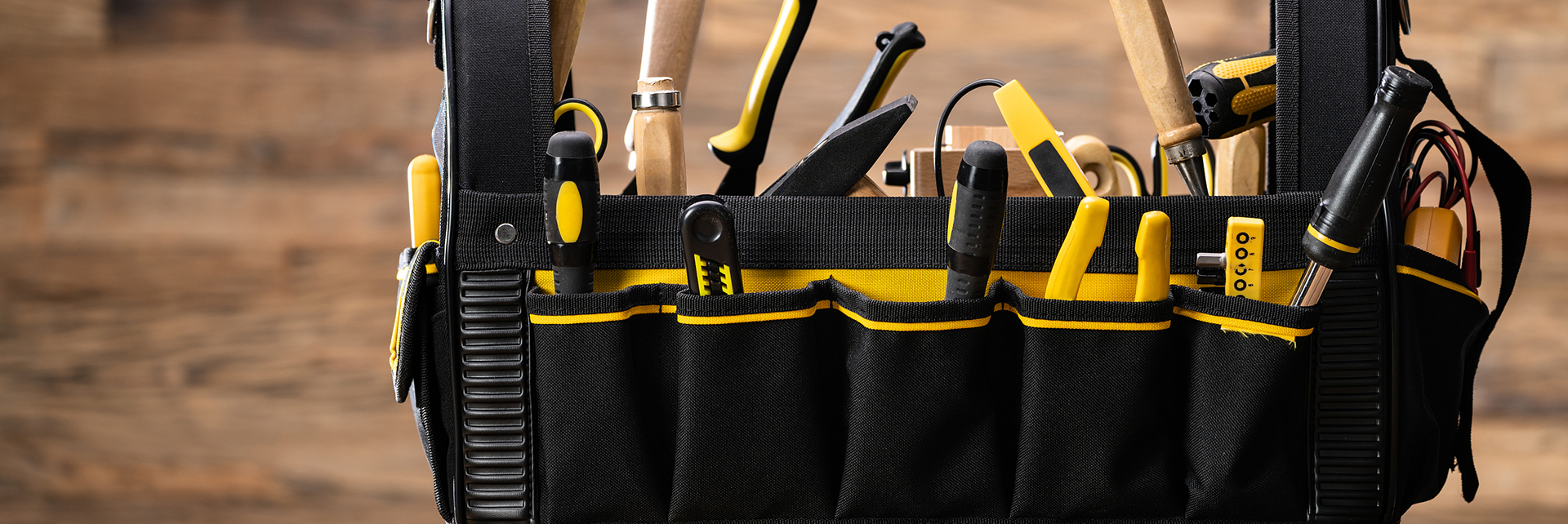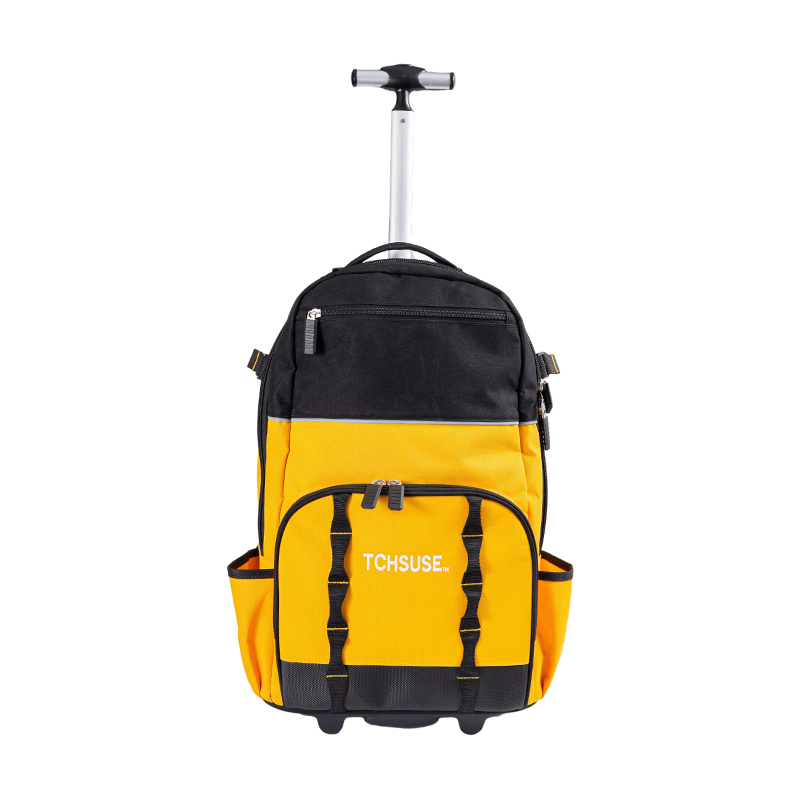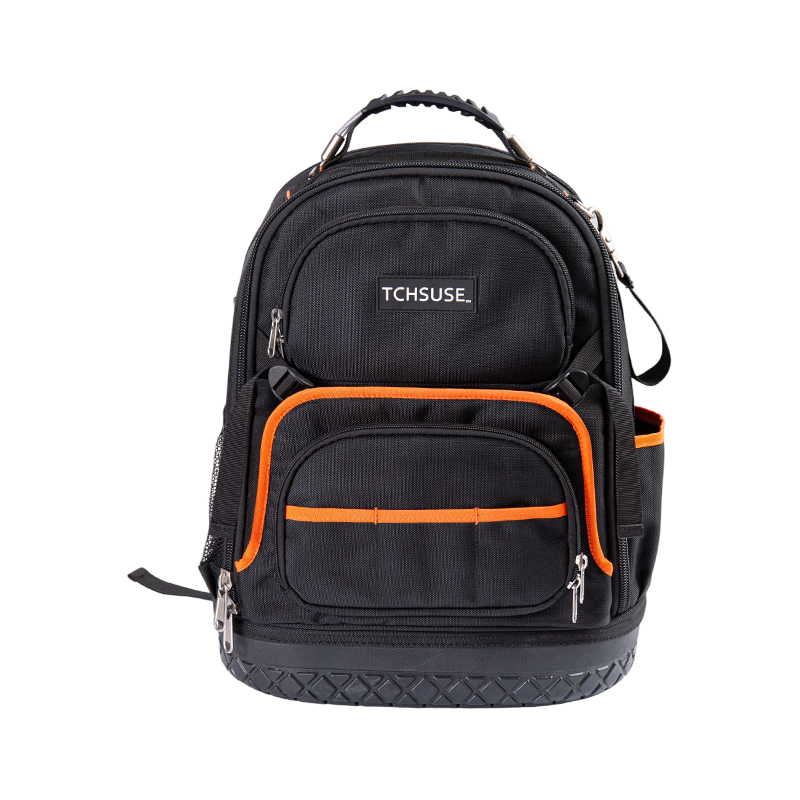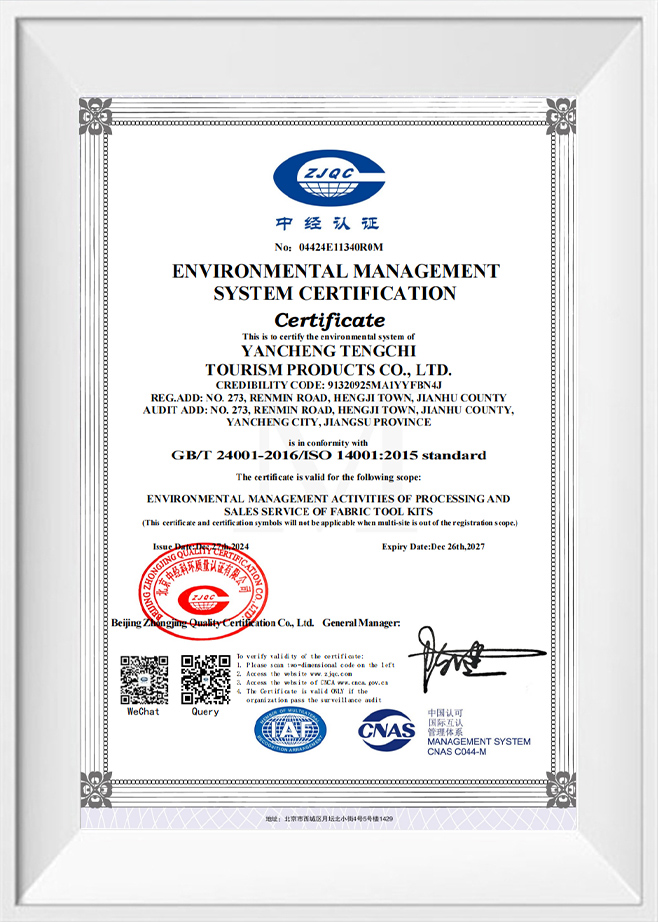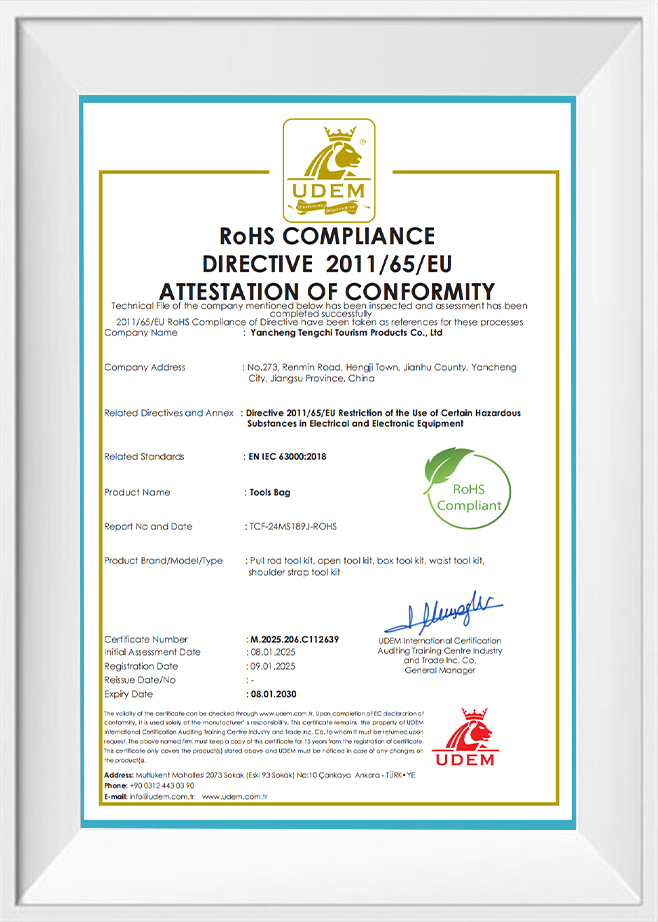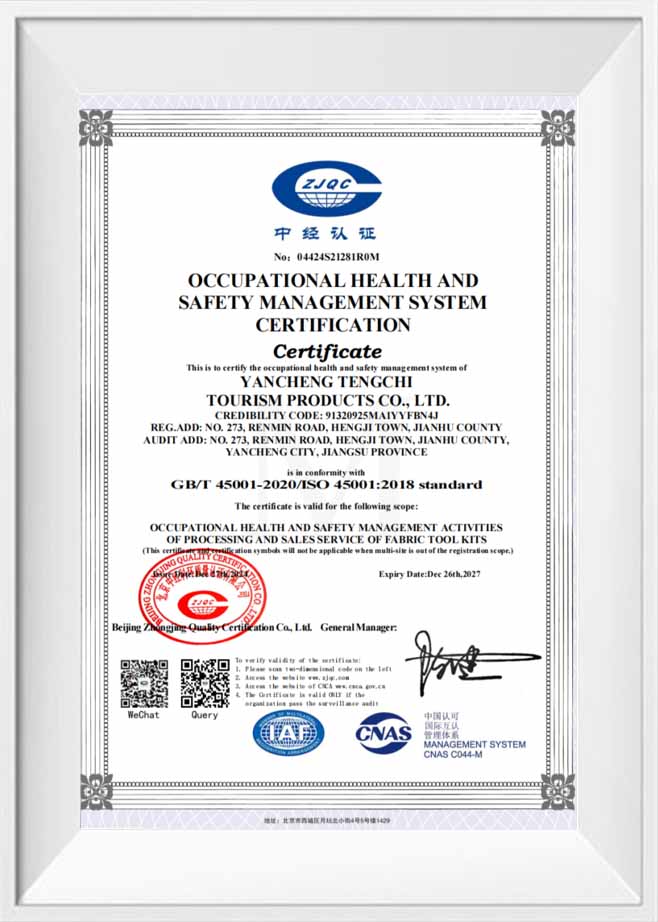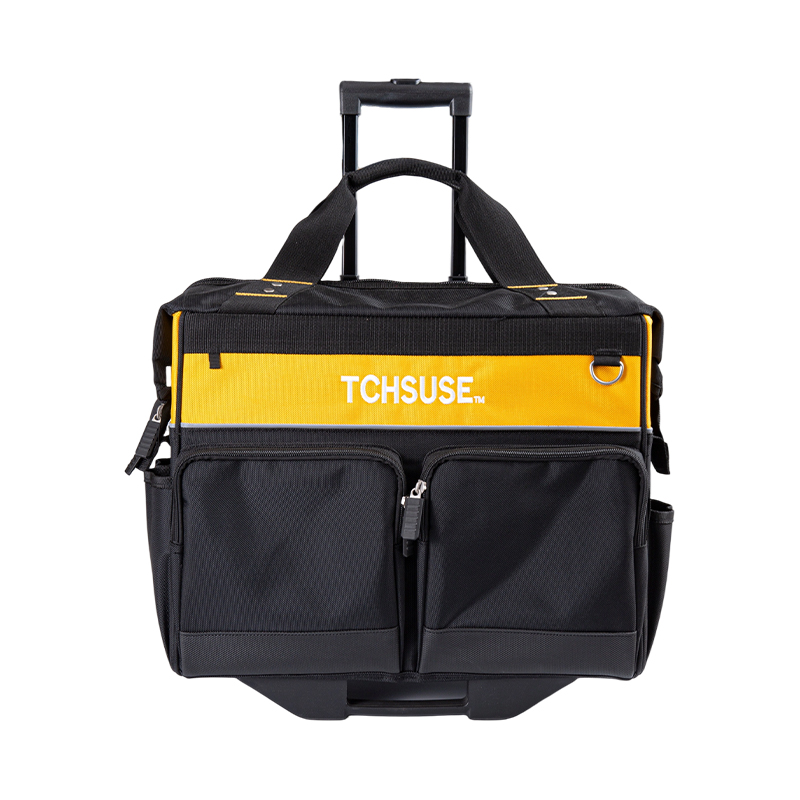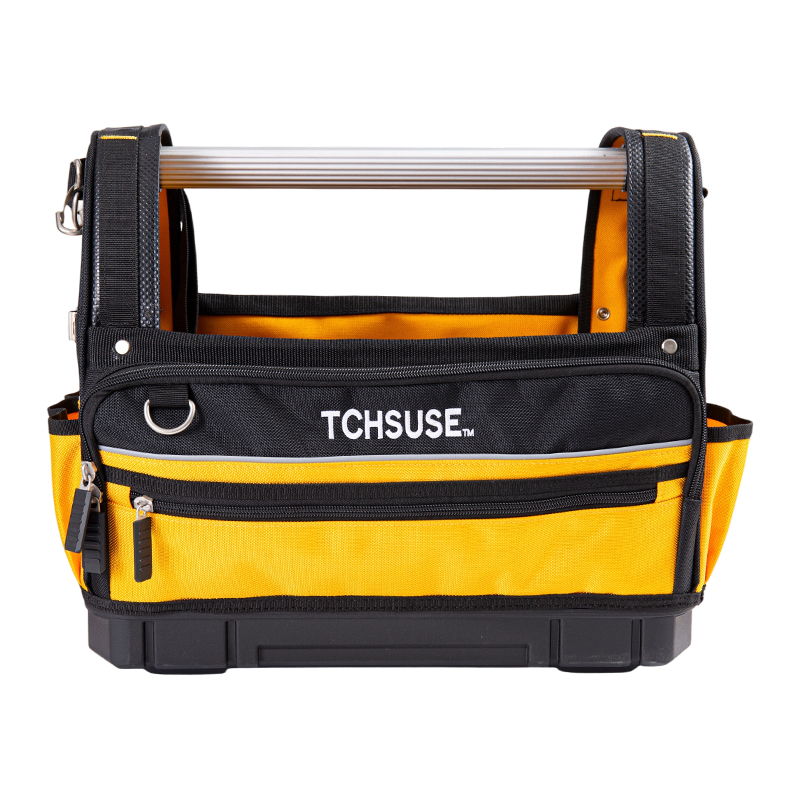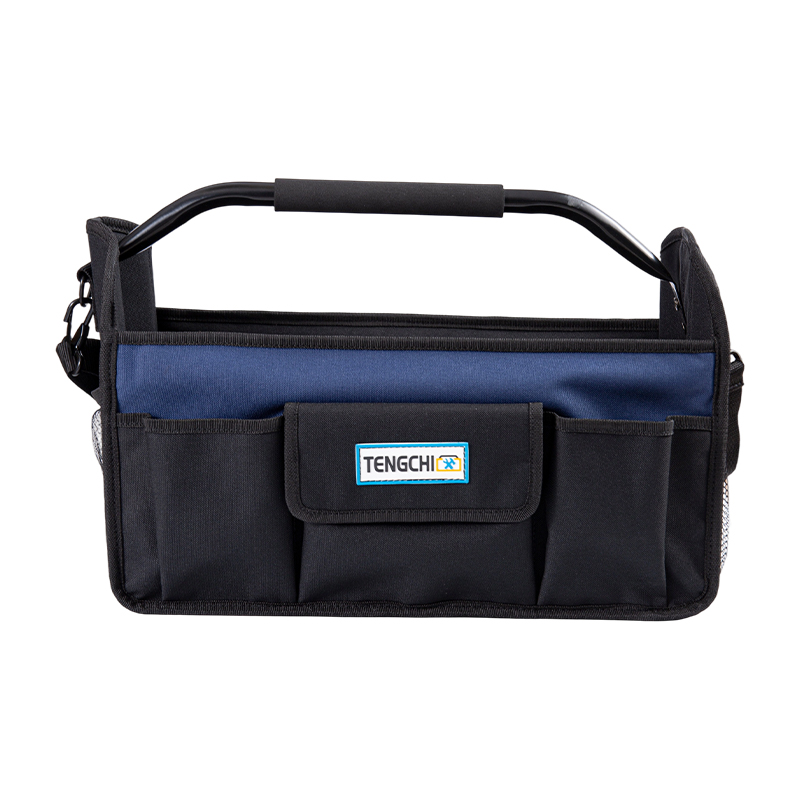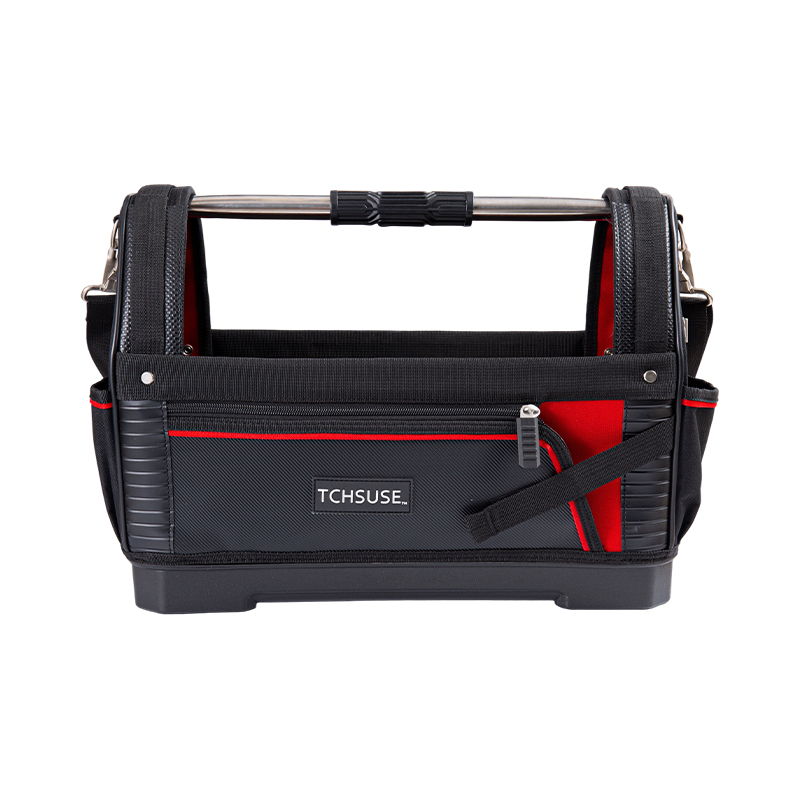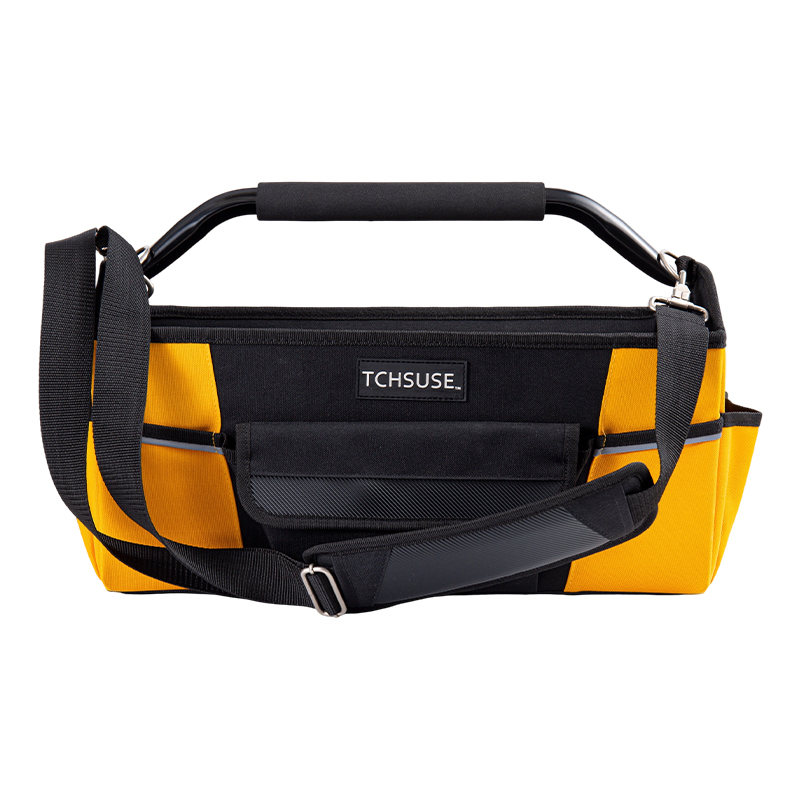Can the electrician plastic bottom tool backpack be used in muddy, wet, or harsh outdoor environments?
Structural Characteristics of the Electrician Plastic Bottom Tool Backpack
The suitability of an electrician plastic bottom tool backpack for harsh outdoor environments begins with its structural configuration. This backpack style integrates the carrying convenience of a traditional tools backpack with the stability and protection of a molded plastic base. Tengchi, as a manufacturer focusing on professional-grade tool bags, applies integrated molding methods for the bottom base to achieve a stable and rigid structure. This design ensures that the backpack can stand upright even on soft ground such as mud, grass, or sand, reducing the risk of tools tipping over or becoming contaminated. Additionally, the multi-layer internal arrangement supports proper classification of manual and power tools, which is important during outdoor operations where quick access is required.
Waterproof and Moisture-Resistant Advantages of the Plastic Base
The plastic base is the core factor that enhances outdoor adaptability. Because the bottom is made from a molded plastic material, it prevents water penetration from below, helping to keep the interior dry even in environments where the ground is wet. Outdoor electrical maintenance, floor construction, and field service jobs often involve puddles, humid ground, or early-morning dew. The moisture barrier provided by the plastic base creates a protective layer between the tools and the ground. For electricians and technicians who frequently work in such environments, this advantage helps maintain tool condition, prevents rust caused by prolonged moisture exposure, and allows the bag to be placed directly on damp surfaces without concern.
Stability and Anti-Contamination Performance in Muddy Conditions
When working in muddy or sandy locations, a backpack’s stability and resistance to contamination become essential. The flat and rigid bottom provided by the plastic material prevents sinking or leaning, enabling the user to set the backpack down securely while accessing tools. This stability also reduces the need for constant repositioning, which can save time during tasks requiring frequent tool changes. The surface of the plastic base also offers resistance to dirt and mud adhesion. Even if mud accumulates, it can be cleaned with simple wiping or rinsing, allowing for easier maintenance after outdoor use. This feature is particularly beneficial for technicians working in construction sites, pipeline installation areas, or outdoor mechanical repair projects.
Upper Fabric Durability and Overall Environmental Adaptability
Although the bottom base provides significant outdoor protection, the upper fabric also contributes to environmental resistance. Tengchi typically uses heavy-duty fabrics and reinforced stitching for its tool backpacks, prioritizing strength and longevity. These materials help resist abrasion from rough surfaces, repeated lifting, and contact with metal tools. In outdoor environments where dust, sand, or debris are unavoidable, the fabric’s resistance to wear supports long-term use. The breathable back pads and thick shoulder straps further enhance comfort for technicians who must walk long distances or climb ladders while carrying tools. The ergonomic design supports extended field operations without excessive strain.
Performance Comparison in Different Outdoor Conditions
The table below summarizes how the electrician plastic bottom tool backpack performs under typical challenging outdoor environments encountered by electricians, installers, and field maintenance personnel:
| Outdoor Condition |
Performance Requirement |
Backpack Response |
| Muddy ground |
Stable standing, anti-sinking base |
Rigid plastic bottom supports upright placement |
| Wet or humid surface |
Moisture barrier to protect tools |
Waterproof plastic bottom blocks ground moisture |
| Sandy or gravel terrain |
Abrasion resistance and easy cleaning |
Plastic base resists scratches and is simple to clean |
| Uneven terrain |
Structural stability |
Integrated base maintains balance |
| Rainy work conditions |
Protection from water contact on ground side |
Plastic bottom minimizes lower part water exposure |
Suitability for Electricians and Outdoor Technicians
Electricians often work in environments where weather and ground conditions vary throughout the day. Whether setting up outdoor wiring, repairing communication lines, or performing maintenance on construction sites, they frequently place tool bags on surfaces that are muddy, dusty, or unstable. The electrician plastic bottom tool backpack aligns with these needs by ensuring the tools remain protected while supporting mobility and easy access. The multi-layer internal structure allows electricians to store pliers, insulation testers, power drivers, and fastening tools in organized compartments. This prevents tool damage and supports operational efficiency in unpredictable outdoor environments.
Compatibility with Long-Duration Outdoor Projects
For personnel involved in long-term construction or infrastructure projects, the tool backpack must withstand repeated outdoor exposure. The combination of a molded plastic base and reinforced fabric structure makes the backpack suitable for recurring placement on rough terrain. Additionally, the breathable back panel reduces discomfort when worn in hot or humid weather. The bottom’s resistance to deformation also ensures that even when the backpack is heavily loaded, it maintains balance and protects tools from impact. For users handling installations that require mobility throughout the day, such as solar panel mounting, landscape electrical work, or pipeline equipment setup, the backpack offers both durability and reliable support.
Maintenance and Cleaning Benefits in Harsh Outdoor Settings
Another advantage is ease of maintenance. After working in muddy or wet environments, cleaning the backpack becomes necessary. The plastic bottom enables straightforward cleaning by rinsing or wiping without affecting structural integrity. This is especially helpful for technicians working in environments where conditions vary rapidly, such as construction sites with rain overnight or dusty areas prone to mud after water exposure. Maintaining cleanliness not only helps tool longevity but also supports safety by preventing mud buildup that can cause surfaces to slip or loosen.
Key Advantages for Harsh Outdoor Adaptation
The table below highlights the primary factors that enable the electrician plastic bottom tool backpack to function effectively in harsh outdoor environments:
| Key Performance Factor |
Description |
Outdoor Benefit |
| Integrated plastic bottom |
Rigid, sealed, waterproof base |
Protection from mud, water, and ground contaminants |
| Multi-layer interior |
Structured tool organization |
Efficient access in field operations |
| Heavy-duty upper material |
Reinforced fabric and stitching |
Resistance to abrasion in outdoor work |
| Ergonomic carrying system |
Padded straps and breathable back pad |
Comfort during long-term outdoor use |
| Easy cleaning |
Dirt-resistant base |
Practical maintenance after harsh-field tasks |
Outdoor Usability
The electrician plastic bottom tool backpack is well-suited for muddy, wet, and challenging outdoor environments due to its integrated plastic base, structured internal layout, durable fabric, and ergonomic design. For technicians working across electrical engineering, outdoor maintenance, construction, and installation tasks, these characteristics together create a functional and reliable solution for storing and transporting tools. With stability on soft ground, moisture protection, and resistance to dirt, the backpack supports consistent performance even under demanding field conditions.


 English
English 